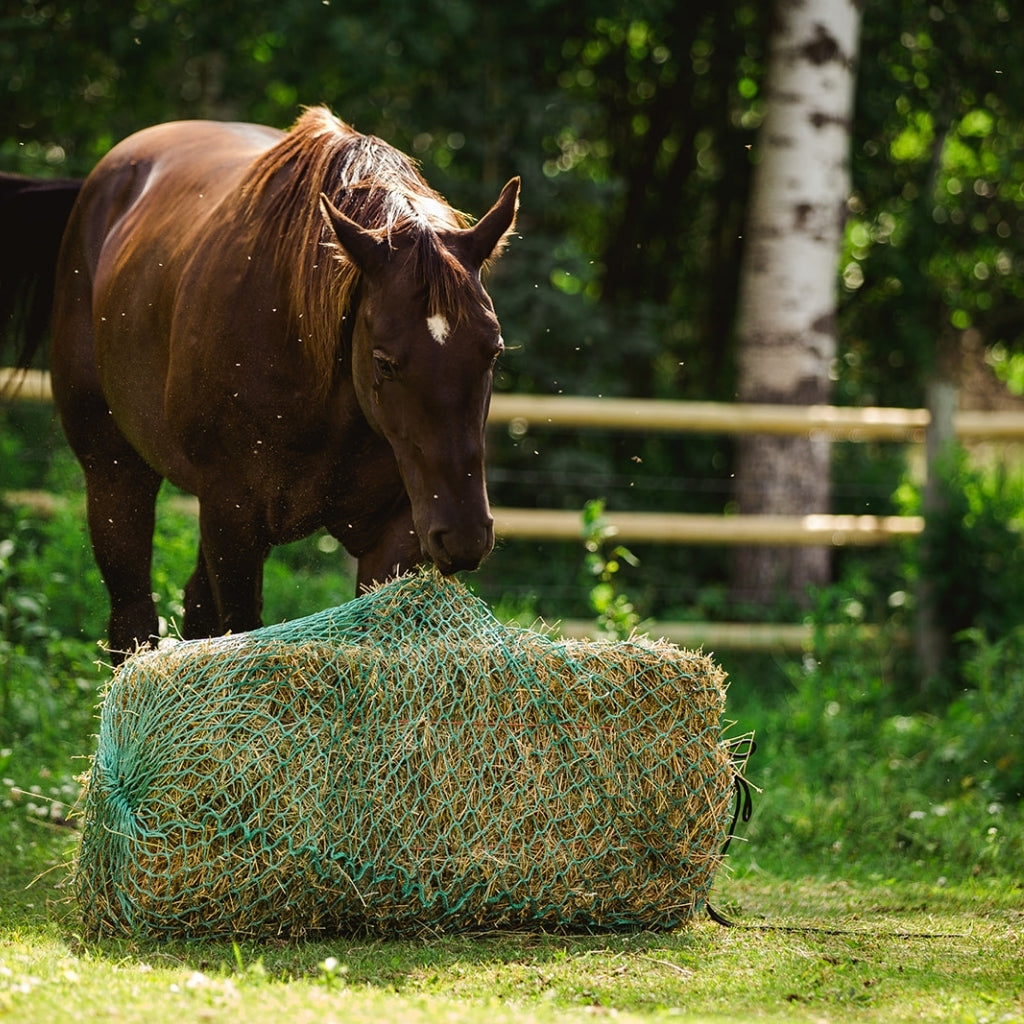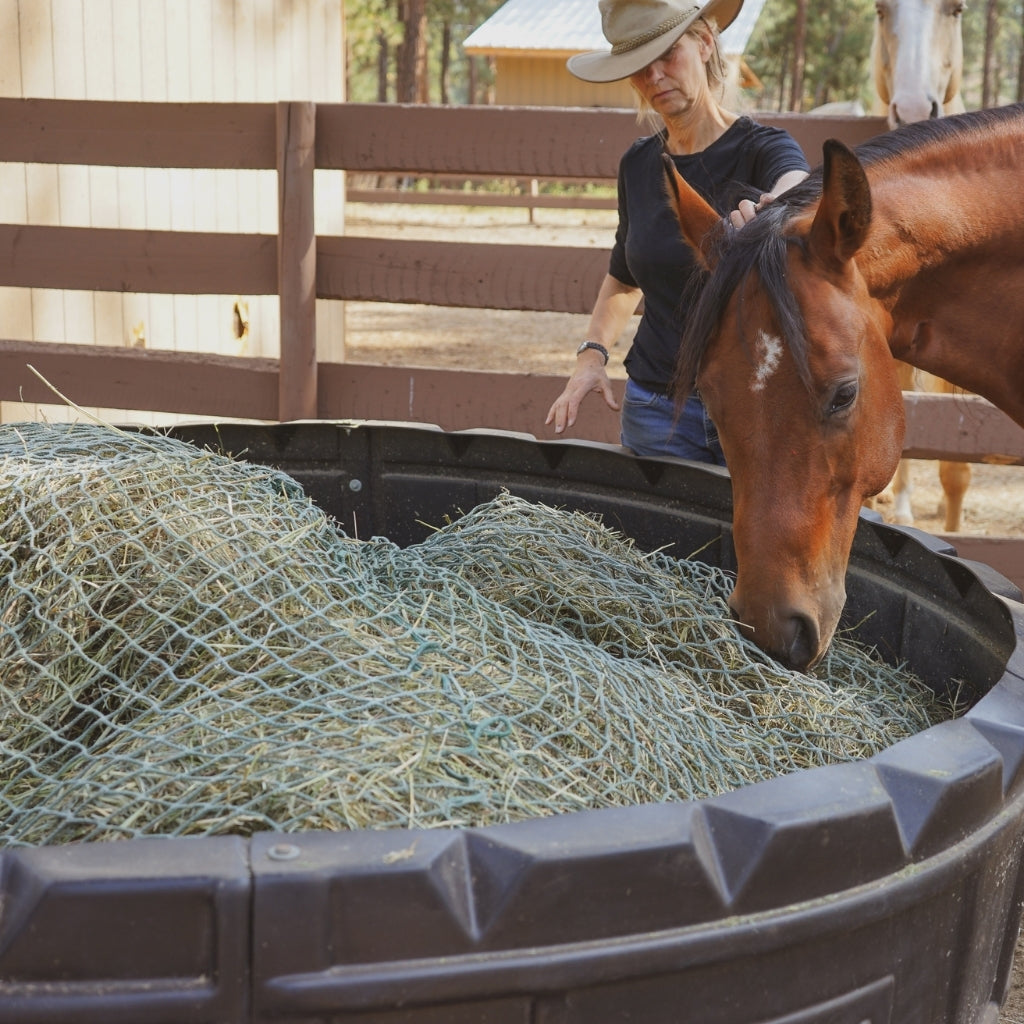As the temperatures start to drop and frost settles on the fields, I always notice a change in the grass — and in how my horses respond to it.
This morning, it was around -7°C with a good frost laying the grass down. The color is starting to yellow, which for me, is the cue to adjust turnout. These early cold snaps can increase sugar concentrations in pasture grass, and for horses that are sensitive or prone to metabolic issues, that can mean trouble.
When the weather is swinging between warm days and cold nights, I prefer to keep the horses off frosted grass and switch them over to round bale feeders for a few weeks. This helps reduce the risk of laminitis, colic, and other metabolic flare-ups that can happen when sugars spike in frozen grass.
Some horses handle these fluctuations better than others, but consistency is key. Feeding from slow feeder hay nets allows horses to graze safely throughout the day — keeping their digestive systems moving naturally while avoiding sudden sugar highs.
Once the frost lifts and the cattle have grazed off the remaining growth, I’ll turn my horses back out gradually. It’s a simple management step, but one that’s made a big difference over the years.
Barn Tip: Even if your horses seem fine on frosty grass, keeping a close eye on their body condition and energy levels during seasonal transitions can help you catch changes early.



